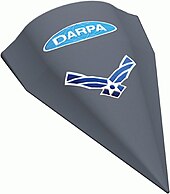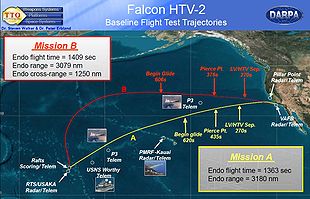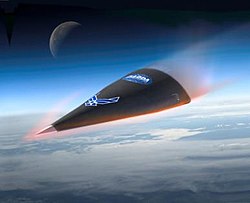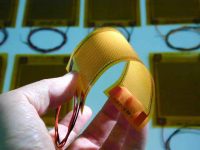

واحد مشترک کمکی پژوهش و مهندسی «هوش یار-تواندار» (HT-CSURE)
Hooshyar-Tavandar Common Subsidiary Unit for Research & Engineering
واحد مشترک کمکی پژوهش و مهندسی «هوش یار-تواندار» (HT-CSURE)
Hooshyar-Tavandar Common Subsidiary Unit for Research & Engineeringسبک ترین هواپیمای دنیا
سبک ترین هواپیمای دنیا

BD5 میکرو از سری کوچکترین هواپیماهای تک سرنشین می باشد که در اواخر قرن ۱۹۶۰ توسط طراح هواپیمای مشهور آمریکایی جیم بد ساخته شد و به صورت عمده توسط شرکت هواپیمایی بد در اوایل قرن ۱۹۷۰ به بازار عرضه گشت.

BD5 یک بدنه ی ساده دارد که جایگاه خلبان در آن به صورت خوابیده تعبیه شده و در زیر سقف کروک مانند آن قرار گرفته است. موتور این هواپیما درون یک محفظه در وسط بدنه نصب شده است و موتور گرداننده ی پروانه یا همان موتور جت در این نوع هواپیمای BD5J در عقب کابین خلبان نصب شده است. این طور به نظر می رسد که ترکیب ظاهر جنگنده مانند این هواپیما با قیمت مناسبش دلیل فروش بی سابقه ی این مدل هواپیما بوده است.

این هواپیما هم به صورت هواپیمای تک سرنشین و هم به عنوان جت مورد استفاده قرار می گیرد و مدل جت آن در کتاب رکوردهای گینس به عنوان کوچک ترین جت جهان به ثبت رسیده است. قبل از پرواز اولین نمونه ی این هواپیما، شرکت بیش از ۸۰۰۰ سفارش دریافت کرد. در مجموع، این شرکت ۳۰۰۰ سفارش برای مدل کیت و بیش از ۶۰۰۰ سفارش برای نسخه ی تکمیل شده ی آن دریافت کرد. BD5 بسیار منحصر به فرد بوده و هیچ شباهتی به دیگر هواپیماهایی که در کارخانه ساخته می شوند ندارد. این هواپیما ی زیبا برای پرواز به شدت دوست داشتنی است و ویژگی های پروازی آن دیدنی و جذاب هستند. چرخ دنده های فرود آن مکانیکی بوده و در کمتر از یک ثانیه جمع می شوند. از هواپیمای BD5 در فیلم جیمز باند به نام “Octopussy” استفاده شد. توازن کنترل BD5 بسیار عالی و متعادل است. قوام و دوام بدنه ی اصلی آن به اثبات رسیده است؛ اما ساخت آن تا حدودی پیچیده و دشوار است. موتور BD5 بسیار قابل اعتماد، سبک، روان و آرام است. توضیح دادن راجع به قابلیت ها و کیفیت های پروازی این هواپیمای کوچک کار ساده ای نیست.

سرعت: ۳۴۱ کیلومتر در ساعت
محدوده: ۱۶۲۵ کیلومتر
اندازه بال: ۴.۴ متر
طول: ۴.۰۶ متر
طراح: جیم بد (Jim Bede)
منبع: سفرمی

ساخت تجاری دوچرخه برقی توسط پژوهشگاه نیرو
 11 آبان 1395 06:07دوچرخه برقی به قیمت مناسب- پژوهشگاه نیرو
11 آبان 1395 06:07دوچرخه برقی به قیمت مناسب- پژوهشگاه نیرو
دنیای سبزتر- دوچرخه مجهز به باطری و موتور کوچکی که روی چرخ جلو یا عقب آن نصب میشود، محصولی است که مرکز خودرو برقی پژوهشگاه نیرو (وابسته به وزارت نیرو) به تازگی عرضه کرده است.
به گزارش دنیای سبزتر و به گفته کارشناسان این مرکز، دوچرخههای برقی ارایه شده، مجهز به باطری و باطری 10 آمپر ساعت و قدرت موتور 48 ولت میتوانند تا 15 کیلومتر مسافت را با سرعت 25 کیلومتر در ساعت طی کنند.
دوچرخهها از برندهای مختلف انتخاب شدهاند. در اغلب نمونهها باطری روی ترک دوچرخه و در یکی از آنها درون تنه جاسازی شده است.
قیمت این دوچرخهها بین 5/1 تا 2 میلیون تومان تعیین شده است.
گفتنی است که این مرکز آمادگی دارد مجموعه باطری نو موتور BLDC و اتصالات مربوطه را روی دوچرخههای شخصی متقاضیان نصب کند.
بد نیست بدانید این باطریها با رکاب زدن شارژ نمیشوند ولی میتوان به دلخواه استفاده از باطری را قطع کرد و باز رکاب زدن دوچرخه را حرکت داد. شارژ مجدد باطری با برق شهر، حدود 4 ساعت طول میکشد.
تویوتا بچه روبات تولید میکند
تویوتا بچه روبات تولید میکند
شرکت تویوتا اعلام کرد از سال آینده فروش بچه روباتهای خود را آغاز خواهد کرد، روباتهایی به اندازه یک کف دست که از توانایی برقراری ارتباط و مکالمه برخوردار است.
براساس گزارش BBC، قد این روبات کوچک که کایروبو مینی نام دارد،تنها 10 سانتیمتر است و با هدف همراهی و دوستی با انسانها طراحی و ساخته شدهاست. از این رو میتواند براساس دادههایی که از خودروی صاحبش به دست میآورد درباره سفری که در پیش رو دارند اظهار نظر کرده و به صحبت با مالکش بپردازد.

این روبات همچنین از ویژگیهای کودکانه برخوردار است، با این همه به اعتقاد متخصصان روباتیک، یک روبات نمیتواند جایگزینی برای کودکان باشد. به گفته فومینوری کاتاوکا مهندس طراح شرکت تویوتا، این روبات زمانی که روی صندلی خودرو نشستهاست به تقلید از حرکات کودکان کمی میلرزد، به این معنی که هنوز مهارت کافی برای حفظ تعادلش را به دست نیاوردهاست. به بیانی دیگر آسیبپذیری روبات با این هدف طراحی شدهاست تا ارتباط عاطفی میان روبات و مالکش قویتر شود.
این روبات میتواند به مذاق افرادی که از غریزه پرورشدادن برخوردارند، خوش بیاید، اما به گفته کرستین داتنهان از دانشگاه هرتفوردشایر، تصور اینکه این روبات بخواهد جای خالی یک کودک را در خانوادهای پر کند توهین آمیز است. وی به تبلیغات شرکت تویوتا اشاره دارد که در آن زنی دیده میشود که درحال رسیدگی به روبات است،اما شرکت تویوتا مستقیما ادعایی مبنی بر جایگزین کردن کودک به واسطه این روبات نداشتهاست. داتنهان میگوید شاید در اختیار داشتن این روبات به افراد حس خوبی بدهد، اما درواقع پای هیچ عنصر انسانی در میان نیست، روباتها نمیتوانند جایگزین کودکان شوند.
تویوتا میگوید بچه روباتش میتواند با استفاده از اشاره، حالتهای صورت و پلک زدن در مکالمات غیررسمی مشارکت کند. اولویتهای مالک خود در رویدادهای گذشته را به خاطر بسپارد. دادههای تجهیزات متصل به اینترنت را برای اظهارنظر کردن به کار ببندد.
قیمت این روبات 300 پوند اعلام شدهاست و هنوز برنامهای برای فروش آن در خارج از ژاپن مطرح نشدهاست. با این همه این روبات نسبت به دیگر روباتهایی که با هدف همنشینی با انسان ساخته شدهاند،مانند روبات پپر، قیمت کمتری دارد.
نسخه قدیمی کایروبو مینی که کایروبو نامداشت در سال 2013 به ایستگاه فضایی بینالمللی فرستاده شد تا در مطالعهای درباره حضور در خلاء و تنهایی در کنار فضانورد ژاپنی کوچی واکاتا باشد.
** DARPA Falcon & Hypersonic Technology Vehicle 2 Projects
DARPA Falcon Project
The DARPA Falcon Project (Force Application and Launch from CONtinental United States) is a two-part joint project between the Defense Advanced Research Projects Agency (DARPA) and the United States Air Force (USAF) and is part of Prompt Global Strike.[1] One part of the program aims to develop a reusable, rapid-strike Hypersonic Weapon System (HWS), now retitled the Hypersonic Cruise Vehicle (HCV), and the other is for the development of a launch system capable of accelerating an HCV to cruise speeds, as well as launching small satellites into earth orbit. This two-part program was announced in 2003 and continued into 2006.[2]
Blackswift was a project announced under the Falcon banner using a fighter-sized unmanned aircraft which would take off from a runway and accelerate to Mach 6 before completing its mission and landing again. The memo of understanding between DARPA and the USAF on Blackswift—also known as the HTV-3X—was signed in September 2007. The Blackswift HTV-3X did not receive needed funding and was canceled in October 2008.[3]
Current research under FALCON program is centered on X-41 Common Aero Vehicle (CAV), a common aerial platform for hypersonic ICBMs and cruise missiles, as well as civilian RLVs and ELVs. The prototype Hypersonic Technology Vehicle 2 (HTV-2) first flew on 22 April 2010; the second test flew 11 August 2011. Both flights ended prematurely.
Contents
Design and development
Past projects
The aim was always to be able to deploy a craft from the continental United States, which could reach anywhere on the planet within one to two hours. The X-20 Dyna-Soar in 1957 was the first publicly acknowledged program—although this would have been launched vertically on a rocket and then glided back to Earth, as the Space Shuttle does, rather than taking off from a runway. Originally, the Shuttle was envisaged as a part-USAF operation, and separate military launch facilities were built at Vandenberg AFB at great cost, though never used. After the open DynaSoar USAF program from 1957–1963, spaceplanes went black. In the mid-1960s, the CIA began work on a high-Mach spyplane called Project Isinglass. This developed into Rheinberry, a design for a Mach-17 air-launched reconnaissance aircraft, which was later canceled.[4]
According to Henry F. Cooper, who was the Director of the Strategic Defense Initiative ("Star Wars") under President Reagan, spaceplane projects consumed $4 billion of funding in the 1970s, 1980s and 1990s (excluding the Space Shuttle). This does not include the 1950 and 1960s budgets for the Dynasoar, ISINGLASS, Rheinberry, and any 21st-century spaceplane project which might emerge under Falcon. He told the United States Congress in 2001 that all the United States had in return for those billions of dollars was "one crashed vehicle, a hangar queen, some drop-test articles and static displays".[5] Falcon was allocated US$170 million for budget year 2008.[6]
HyperSoar
The HyperSoar was an American hypersonic aircraft project developed at Lawrence Livermore National Laboratory (LLNL). It was to be capable of flying at around Mach 12 (9,200 mph, 14,700 km/h), allowing it to transit between any two points on the globe in under two hours. The HyperSoar is predicted to be a passenger plane capable of skipping outside the atmosphere to prevent it from burning up in the atmosphere. A trip from Chicago to Tokyo (10,123 kilometers) would take 18 skips, or 72 minutes. It was planned to use hydrocarbon-based engines outside the atmosphere and experimental jet engine technology with testing to begin by 2010. Later, the Hypersoar concept was acquired from LLNL by DARPA,[7] and in 2002 it was combined with the USAF X-41 Common Aero Vehicle to form the Falcon program.[8]
FALCON
The overall FALCON (Force Application and Launch from CONtinental United States) program announced in 2003 had two major components: a small launch vehicle for carrying payloads to orbit or launching the hypersonic weapons platform payload, and the hypersonic vehicle itself.[2]
Small Launch Vehicle
The DARPA FALCON solicitation in 2003 asked for bidders to do development work on proposed vehicles in a first phase of work, then one or more vendors would be selected to build and fly an actual launch vehicle. Companies which won first phase development contracts of $350,000 to $540,000 in November 2003 included:[9]
- AirLaunch LLC, Reno Nevada
- Andrews Space Inc., Seattle Washington
- Exquadrum Inc., Victorville California
- KT Engineering, Huntsville Alabama
- Lockheed Martin Corp., New Orleans Louisiana
- Microcosm Inc., El Segundo California
- Orbital Sciences Corp., Dulles Virginia
- Schafer Corp., Chelmsford Massachusetts
- Space Exploration Technologies, Hawthorne California
Hypersonic Weapon System
The first phase of the hypersonic weapon system development was won by three bidders in 2003, each receiving a $1.2 to $1.5 million contract for hypersonic vehicle development:[9]
- Andrews Space Inc., Seattle, Wash.
- Lockheed Martin Corp., Lockheed Martin Aeronautics Co., Palmdale, Calif.
- Northrop Grumman Corp., Air Combat Systems, El Segundo, Calif.
Lockheed Martin received the only Phase 2 HWS contract in 2004, to develop technologies further and reduce technology risk on the program.[9]
Follow-on hypersonic program
Following the Phase 2 contract, DARPA and the US Air Force continued to develop the hypersonic vehicle platform.
The program was to follow a set of flight tests with a series of hypersonic technology vehicles.[10]
The FALCON project includes:
- X-41 Common Aero Vehicle (CAV): a common aerial platform for hypersonic ICBMs and cruise missiles, as well as civilian RLVs and ELVs.
- Hypersonic Technology Vehicle 1 (HTV-1): a test concept, originally planned to fly in September 2007, now canceled.[11]
- Hypersonic Technology Vehicle 2 (HTV-2): first flew on 22 April 2010, but contact was lost soon after booster separation[12][13][14]
- HTV-3X: Blackswift, now canceled
The Hypersonic Cruise Vehicle (HCV) would be able to fly 9,000 nautical miles (17,000 km) in 2 hours with a payload of 12,000 lb (5,500 kg).[15] It would fly at a high altitude and achieve speeds of up to Mach 20.[16]
Blackswift
The Blackswift was a proposed aircraft capable of hypersonic flight designed by the Lockheed Martin Skunk Works, Boeing, and ATK.[17]
The USAF states that the "Blackswift flight demonstration vehicle will be powered by a combination turbine engine and ramjet, an all-in-one power plant. The turbine engine accelerates the vehicle to around Mach 3 before the ramjet takes over and boosts the vehicle up to Mach 6."[18] Dr. Stephen Walker, the Deputy Director of DARPA's Tactical Technology Office, will be coordinating the project. He told the USAF website,
I will also be communicating to Lockheed Martin and Pratt & Whitney on how important it is that we get the technical plan in place ... I'm trying to build the bridge at the beginning of the program—to get the communication path flowing.
The Falcon program has announced the hypersonic horizontal take-off Blackswift/HTV-3X. It is also launching the HTV-2 off the top of a rocket booster.[19] Falcon seems to be converging from two directions, on the ultimate goal of producing a hypersonic aircraft which can take off and land from a runway in the USA, and be anywhere in the world in an hour or two. Falcon is methodically proceeding toward a Hypersonic Cruise Vehicle. Dr. Walker stated,
We need to fly some hypersonic vehicles—first the expendables, then the reusables—in order to prove to decision makers that this isn't just a dream… We won't overcome the skepticism until we see some hypersonic vehicles flying.
The HTV-3X activates its turbojets in transonic flight…
|
…then ignites its scramjets for the hypersonic phase
|
Simulation of the Falcon HTV-3X[20]
|
HTV-3X on approach to Edwards Air Force Base
|
In October 2008 it was announced that HTV-3X or Blackswift did not receive needed funding in the fiscal year 2009 defense budget and had been canceled. The Hypersonic Cruise Vehicle program will continue with reduced funding.[3][21]
Flight testing
DARPA had two HTV-2s built for two flight tests in 2010 and 2011. The Minotaur IV light rocket is the booster for the HTV-2 with Vandenberg Air Force Base serving as the launch site. DARPA planned the flights to demonstrate thermal protection systems and aerodynamic control features.[3][12] Test flights were supported by NASA, the Space and Missile Systems Center, Lockheed Martin, Sandia National Laboratories and the Air Force Research Laboratory's (AFRL) Air Vehicles and Space Vehicles Directorates.
The first HTV-2 flight was launched on 22 April 2010.[12] The HTV-2 glider was to fly 4,800 miles (7,700 km) across the Pacific to Kwajalein at Mach 20.[19] The launch was successful, but the first mission was not completed as planned. Reports stated that contact had been lost with the vehicle nine minutes into the mission.[22][23] In mid-November, DARPA revealed that the test flight had ended when the computer autopilot had "commanded flight termination". According to a DARPA spokesman, "When the onboard system detects [undesirable or unsafe flight] behavior, it forces itself into a controlled roll and pitchover to descend directly into the ocean." Reviews found that the craft had begun to roll violently.[24]
A second flight was launched on 11 August 2011. The unmanned Falcon HTV-2 successfully separated from the booster and entered the mission's glide phase, but again lost contact with control about nine minutes into its planned 30-minute Mach 20[citation needed] glide flight. Initial reports indicated it purposely impacted the Pacific Ocean along its planned flight path as a safety precaution.[25][26][27] Some analysts thought that the second failure would result in an overhaul of the Falcon program.[28]
Refocus
In July 2013, DARPA decided it would not conduct a third flight test of the HTV-2 because enough data had been collected from the first two flights, and another test was not thought to provide any more usable data for the cost. The tests provided data on flight aerodynamics and high-temperature effects on the aeroshell. Work on the HTV-2 would continue to summer 2014 to provide more study on hypersonic flight. The HTV-2 was the last active part of the Falcon program. DARPA has now changed its focus for the program from global/strategic strike to high-speed tactical deployment to penetrate air defenses and hit targets quickly from a safe distance.[29]
See also
- Boeing X-51
- Prompt Global Strike, a follow-on military project
- Rockwell X-30 (National AeroSpace Plane)
- Lockheed Martin SR-72
References
- Darpa Refocuses Hypersonics Research On Tactical Missions - Aviationweek.com, 8 July 2013
External links
| Wikimedia Commons has media related to HTV-2 (DARPA). |
- Falcon page on Darpa.mil
- HCV page on Globalsecurity.org
- "Air Drops Dummy Rocket for Darpa's Falcon", Aviation Week,
- "Hypersonics Back in the News" on Defensetech.org
- "Going Hypersonic: Flying FALCON for Defense" and "Air Force Plans Flight Tests Of Hypersonic Vehicle" on Space.com
- "Pentagon Has Far-Reaching Defense Spacecraft in Works", Washington Post, March 16, 2005
- "US hypersonic aircraft projects face change as Congress urges joint technology office", Flight International, 30 May 2006
Hypersonic Technology Vehicle 2
Hypersonic Technology Vehicle 2 (HTV-2) is a crewless,[1] experimental rocket glider developed as part of the DARPA Falcon Project capable of flying at 13,000 mph (21,000 km/h).[2] It is a test bed for technologies to provide the United States with the capability to reach any target in the world within one hour using an unmanned hypersonic bomber aircraft.[3]
Contents
Development
The Falcon HTV-1 program, which preceded the Falcon HTV-2 program, was conducted in April, 2010. The mission ended within nine minutes from launch.[3] Both these missions are funded by the US Defense Advanced Research Projects Agency (DARPA) to help develop hypersonic technologies and to demonstrate its effectiveness.[4] Under the original plan, HTV-1 was to feature a hypersonic lift-to-drag ratio (L/D) of 2.5, increasing to 3.5-4 for the HTV-2 and 4-5 for the HTV-3. The actual ratio of HTV-2 was estimated to be 2.6.[5]
HTV-2 was to lead to the development of an HTV-3X vehicle, known as Blackswift, which would have formed the basis for deployment around 2025 of a reusable Hypersonic Cruise Vehicle, an unmanned aircraft capable of taking off from a conventional runway with a 5,400 kg (12,000 lb) payload to strike targets 16,650 km away in under 2h. The HCV would have required an L/D of 6-7 at M10 and 130,000 ft (40,000m).[6]
Design
Development of protection structures that are tough and light-weight, development of an aerodynamic shape that has a high lift to drag ratio, development of automatic navigation control systems etc. were some of the initial technical challenges that had been overcome in the final design.[4] The various departments involved in designing the vehicle included aerothermodynamics, materials science, hypersonic navigation, guidance and control systems, endo- and exo-atmospheric flight dynamics, telemetry and range safety analysis. The craft could cover 17,000 kilometres, the distance between London and Sydney, in 49 minutes.[3]
Flight testing
The HTV-2's first flight was launched on 22 April 2010.[7] The HTV-2 glider was to fly 4,800 miles (7,700 km) across the Pacific to Kwajalein at Mach 20.[8] The HTV-2 was boosted by a Minotaur IV Lite rocket launched from Vandenberg Air Force Base, California. The flight plan called for the craft to separate from the launch vehicle, level out and glide above the Pacific at Mach 20.[1][3] Contact was lost with the vehicle nine minutes into the 30-minute mission.[3][9][10] In mid-November, DARPA stated that the first test flight ended when the computer autopilot "commanded flight termination" after the vehicle began to roll violently.[11]
A second flight was initially scheduled to be launched on August 10, 2011, but bad weather forced a delay.[12] The flight was launched the following day, on 11 August 2011. The unmanned Falcon HTV-2 successfully separated from the booster and entered the mission's glide phase, but again lost contact with control about nine minutes into its planned 30-minute Mach 20 glide flight. Initial reports indicated it purposely impacted the Pacific Ocean along its planned flight path as a safety precaution.[13][14][15]
Future development
DARPA does not plan to conduct a third flight test of the HTV-2. The decision was made because substantial data was collected from the first two flights, and a third was not thought likely to provide any additional valuable data for the cost. The first flight provided data in aerodynamics and flight performance, while the second provided information about structures and high temperatures. Experience gained from the HTV-2 will be used to improve hypersonic flight.
Work on the HTV-2 will continue to Summer 2014 to capture technology lessons and improve design tools and methods for high-temperature composite aeroshells.[16][needs update]
See also
- Rockwell X-30
- Boeing X-51
- Prompt Global Strike
- WU-14 – a similar Chinese system
- Yu-71 – a similar Russian system
- Hypersonic Technology Demonstrator Vehicle - a similar Indian system
References
- Darpa Refocuses Hypersonics Research On Tactical Missions - Aviationweek.com, 8 July 2013
External links
سازه های مورفینگ(سازه های هوشمند)
سازه های مورفینگ(سازه های هوشمند)
مقدمه
سازه های مورفینگ(سازه های هوشمند) به سازه هایی اطلاق می شود که قادر اند شکل و هندسه خود را با توجه به شرایط مختلف تغییر دهند و از این طریق سبب افزایش عملکرد سازه ها شوند. امروزه استفاده از این سازه ها که به آن ها سازه های هوشمند نیز اطلاق می شوند در کاربردهای مختلف، مورد علاقه طراحان قرار گرفته است. افزایش قدرت مانور هواپیماها و نیز روند روبه توسعه سفینه ها و ماهواره های فضایی از جمله دلایل افزایش تمایل به استفاده از این سازه ها می باشد.
یکی از مشخصات قابل توجه پرندگان توانایی آنها در انطباق هندسه بال هایشان با توجه به شرایط مختلف پرواز می باشد. این قابلیت سبب افزایش عملکرد پرندگان می شود و کمک می کند که به آسانی بتوانند مراحلی مانند اوج گرفتن، تغییر جهت پرواز را و تغییر سرعت را به بهترین صورت کنترل کنند. تصویر ۱ نشان دهنده چگونگی تغییرات هندسه بال پرندگان و تغییر سرعت آن ها می باشد.
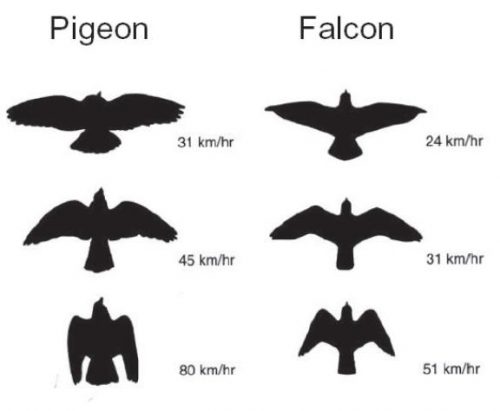
شکل۱: چگونگی تغییر بال پرندگان در شرایط مختلف پرواز
ایده ایجاد سازه های مورفینگ(سازه های هوشمند)
ایده ساختار های مورفینگ از این جا ناشی شده است که سازه ها بتوانندشکل و هندسه خود را به گونه ای تغییر بدهند که سازه بتواند در برابر نیرو های مختلفی که به آن وارد می شود بهترین عملکرد را داشته باشد. بال های با ابعاد ثابت برای شرایط مختلف پرواز شرایط بهینه ای را ندارند از این رو است که پرندگان در حین پرواز با عقب راندن بال های خود می توانند با کاهش نیروی مقاوم در برابر پرواز، سرعت خود را افزایش دهند.
برخی از هواپیما های جنگی مانند هواپیمای Grumman’s F14-Tomcat تا حدی از مکانیزم مورفینگ بهره گرفته است. تصویر هواپیمای Grumman’s F14-Tomcat در شکل ۲ نشان داده شده است.
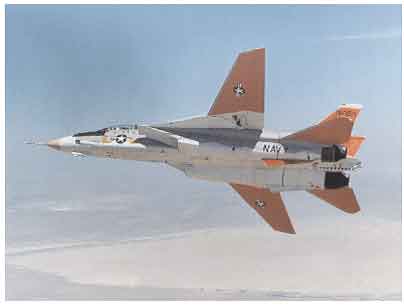
شکل۲: تصویر هواپیمای F14-Tomcat
در حالت ایده آل طراحی بال باید به گونه ای باشد که قابلیت تغییر خود را در شرایط مختلف پرواز داشته باشد. شکل ۳ زیر حالت های مختلف پرواز برای یک هواپیما را نشان می دهد نشان می دهد. به منظور انجام یک پرواز بهینه، لازم است که بال هواپیما در هریک از شرایط پرواز هندسه ای متفاوت را داشته باشد.
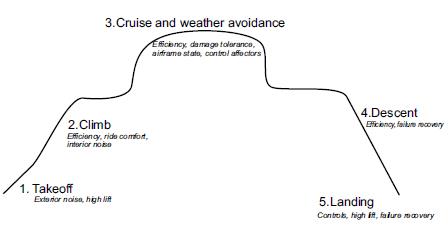
شکل۳: شکل حالت های مختلف پرواز
برای ایجاد خاصیت مورفینگ می توان از نوعی از عملگرهای پیزو الکتریک استفاده کرد. در این نوع از عملگر ها که از الیاف پیزوالکتریک ساخته شده اند، به منظور تغییر حالت سریع ورق های کامپوزیتی غیر متقارن استفاده می شود. در نوع دیگری از مکانیزم ها برای ایجاد سازه های مورفینگ از اعمال تغییرات دما استفاده می کنند. این سازه ها به سازه های دوپایا(Bi-stable) معروف هستند. در این حالت ورق های کامپوزیتی قادر هستند که بعد از فرایند پخت با توجه به نوع لایه چینی دچار تغییر شکل های مختلفی شوند. این سازه ها با اعمال بار خارجی می توانند هندسه خود را تغییر دهند. هنگامی که نیرو به یک مقدار بحرانی می رسد با توجه به میدان تنش پسماند موجود در ورق و نیز هندسه اولیه، ورق از طریق مکانیزم کمانش و به صورت ناگهانی به شکل پایدار دیگری تغییر حالت می دهد.
مقاله قبلی سایت را می توانید اینجا بخوانید
همچنین شما دوست عزیز و متخصص نیز می توانید مقالات خود را با اسم خودتون (شرکت، اشخاص و مخترعان) به همراه تبلیغ محصولات و خدمات خود در آخر آن در سایت تخصصم اینه به رایگان منتشر نمایید. اینجا کلیک کنید تا شرایط نوشتن و فرستادن مقاله را مشاهده نمایید.

